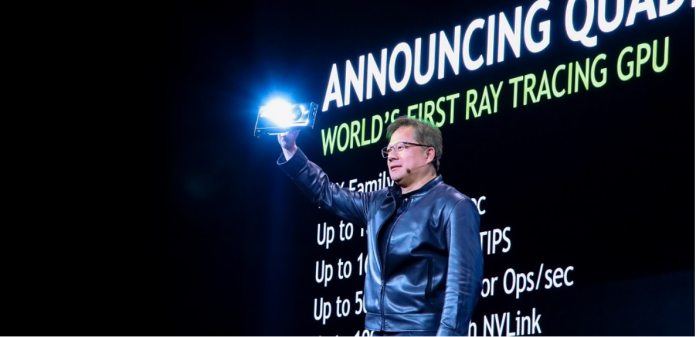Nvidia held a keynote at Siggraph today, and the star of the show was the company's new Turing architecture. This is the same architecture that has been the subject of leaks in recent weeks. Also on display at the keynote were three new workstation ready graphics cards.
In terms of the Turing architecture, Nvidia describes it as “the greatest leap” since the CUDA GPU was revealed in 2006. The architecture is used in three new GPUS within the Quadro range of cards. As the world's first ray tracing GPUs, the company says the architecture “fundamentally changes how computer graphics will be done, it's a step change in realism.”
The new range boasts Nvidia's new RT (ray tracing) Cores, which literally trace the path of lights as it works with objects in a scene environment. Of course, this is hardly a new ability, but it has normally been very intensive on a computer's processes.
Nvidia has been among the leaders in improving ray tracing efficiency. The new Quadro RTx GPUs are a culmination of the company's efforts in recent years. Indeed, the new RT cores allow ray tracing to perform at 25x that of the company's previous Pascal architecture. In fact, Nvidia says it can achieve 10 GigaRays a second at peak.
“Hybrid rendering will change the industry, opening up amazing possibilities that enhance our lives with more beautiful designs, richer entertainment and more interactive experiences,” says Nvidia CEO Jensen Huang. “The arrival of real-time ray tracing is the Holy Grail of our industry.”
AI
Artificial intelligence is also a big part of the new Quadro GPUs. Nvidia has baked in its Tensor Cores, which are AI-focused. Capable of 500 trillion tensor operations per second, the processors can boost AI features such as resolution and scaling.
“At some point you can use AI or some heuristics to figure out what are the missing dots and how should we fill it all in, and it allows us to complete the frame a lot faster than we otherwise could,” Huang said.






